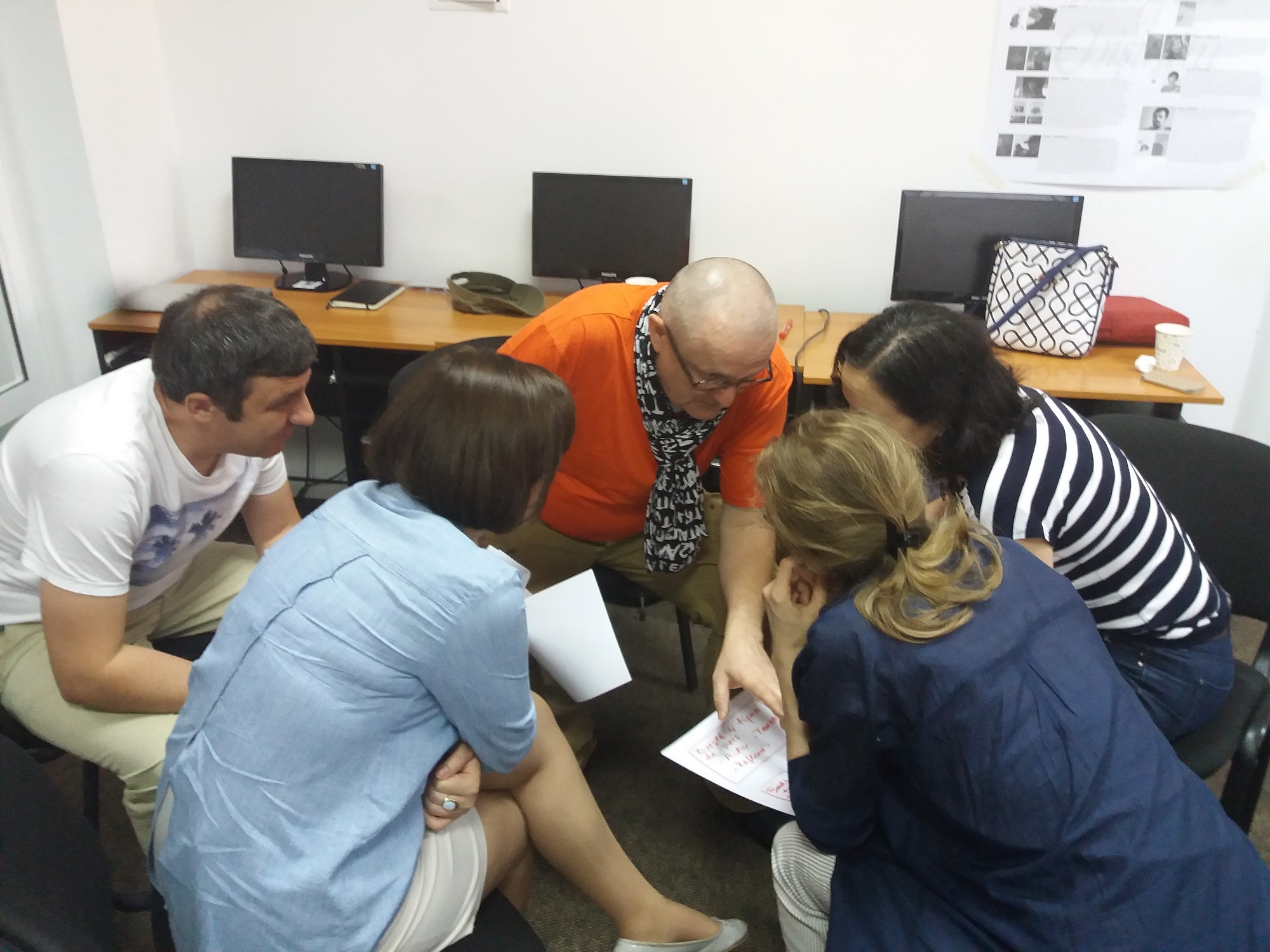Learning to Teach: Training Program for SAJ Trainers

Academic year 2016-2017 ended with a training program for... the trainers of the School of Advanced Journalism. Between June 13 and 17 they attended a training of trainers. In five days, the best journalists and media experts, who in the course of the year teach at the SAJ, found out about current trends in the field of adult education and learned how to develop their skills in order to become successful trainers, how to catch students' attention and how to communicate their knowledge to others. The training was guided by Cristina Lupu, Program Director at the Independent Journalism Center from Bucharest, Romania.
The training began with a short presentation of the principles of adult education. Trainers learned how and why adults learn differently than children, how to catch their attention when you feel you are “loosing” them and they are no longer listening to you, and what modern techniques could be used during classes at the SAJ. “You have to find an individual approach to each student. Ask questions that would not inhibit them, encourage them to speak, and give everyone equal opportunities,” suggested Christina Lupu. According to her, to achieve better results, every trainer should set clear rules and requirements from the very beginning. They should also tell students about their expectations. “Unlike children, adults are more resistant to change. Some of them face difficulties and become more timid than their colleagues. Treat your students as adults who already have some life experience. Try to identify it and help them to use this experience in their professional activity," she added.
According to Cristina Lupu, to achieve the best results, every trainer has to adapt to new information technologies and use a variety of teaching methods. “Keep up with the needs and interests of your students. Be interactive. Try to use different means of data presentation, such as video, radio, various mobile platforms, group exercises and discussions, debates. Combine several elements to make the course as dynamic and interesting as possible. Go into social media,” the trainer said.
Another intensely discussed issue was the need to listen to students and to have feedback, which is essential in the training process. SAJ trainers learned to how better control their emotions, how to draw students’ attention, and, most importantly, how to motivate students. “First, try to see what was done well. Then move to comments and tell what could be improved in your students’ material.”
Since theoretical knowledge is best mastered during practical work, SAJ trainers were not an exception. During the entire training they participated in various group activities and did exercises that strengthened them as a team and offered them new tricks for the work with their future students.
SAJ trainers were impressed by the course. They said that the training helped them consolidate the skills they had and discover new things and methods which they will surely apply in practice. Everything is for the good of the students who will come to study at the School of Advanced Journalism.
